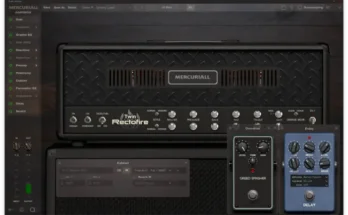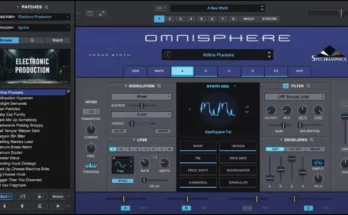Springs v1.3.0 WIN-R2R
Team R2R | 30 Oct 2021 | 41 MB
Springs is a plugin which features a collection of vintage spring reverbs paired with an authentic Baxandall EQ emulation.
Springs features emulations from 9 types of spring reverbs, ranging from a long 6-spring pipe to a tiny battery-powered single-spring unit. We have used a combination of convolution and modelling to recreate the vintage character of each reverb.
Spring reverbs were usually paired with tone stacks from guitar amplifiers. Springs features one of the most iconic and unique sounding tone stack equalizers: the Baxandall EQ. A classic Baxandall tone stack usually features just the bass and treble bands, but we have also added a Mid band (with control over the Q).
BAXANDALL EQ
The Baxandall EQ is a classic type of EQ, mostly found in guitar amps, and usually limited to just a single tone control or two bands (bass and treble). We have added a third band (mid with Q control) to shape the reverb sound further.
One important characteristic of the Baxandall EQ is that the bands interact with each other. This may seem like an unwanted behavior, but it’s one of the reasons why the Baxandall EQ curves are smooth and musical.
EDITOR
By clicking on the wrench tool button you can open the editor window.
Springs uses a combination of convolution and modeling to recreate each spring reverb. With the editor you can edit the impulse response of the reverb directly.
This can be useful to fine-tune the size/decay of the reverb, but can also be used to completely mangle the source (check the experimental presets).
BANDWIDTH
While with the Baxandall EQ you can shape the sound of the mix (dry+wet) or just the wet signal, with the Bandwidth control you can filter the input signal that goes into the spring emulation.
Some springs have a boomy low end, some are too bright and boingy. By limiting the bandwidth of the signal you can dampen these characteristics.
HOW SPRING REVERBS WORK
A spring reverb is an electromechanical device that uses transducers/pickups with steel springs in order to simulate the reflections of a reverb.
The input signal is passed through a transducer to one or multiple springs, the vibrations are then captured by an output transducer on the opposite side.
Using multiple springs with different sizes and different thickness can create a more interesting and rich reverb sound.
SPECIFICATIONS
9 Vintage Spring Reverbs
Baxandall EQ (three bands)
80 Presets
Resizable Window
Preset system with randomizer




